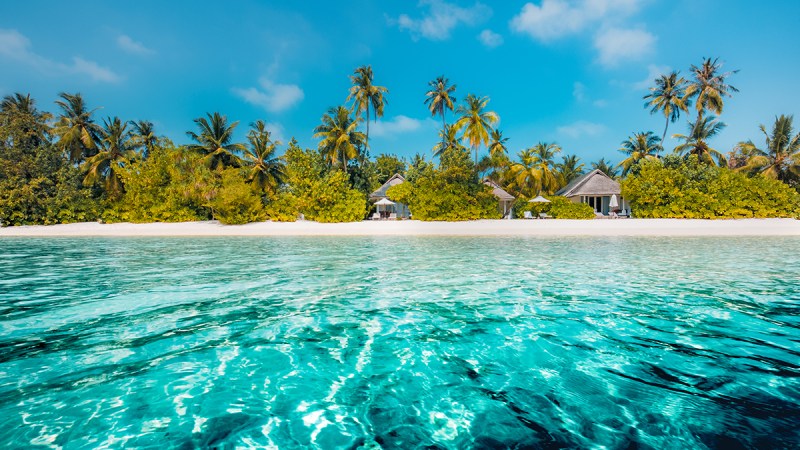
You need to look farther afield: to The Exumas. This stunning stretch of 365 Bahamian cays (pronounced “keys”) is beautiful, exotic, and closer to the continental United States than almost anywhere in the Caribbean. They’re so close, in fact, that daily flights out of south Florida can be found for a song. Bottom line: You have no reason not to go this winter. But, just in case you needed a few more reasons, here are six of our favorites.
Stroll the “Mile-Long Sandbar”

It may not technically be the longest sandbar in the Bahamas, but it is the most famous. Just south of Big Farmer’s Cay, the aptly named Big Farmer’s Cay Sandbar is an impossibly beautiful stretch of sugary white sand that reveals itself only at low tide. The so-called “Mile-long Sandbar” is an iconic photo opp for any visitor to The Exumas, and a great place to relax, sunbathe, or enjoy a picnic on the beach.
Dive and Decompress on Stocking Island

Stocking Island is barely a stone’s throw from George Town, and the cay’s pristine, flour-soft beaches are reason enough to make a day trip of it. When you’re ready to get wet, head just off the southern shores to Mystery Cave. This dramatic blue hole — the Bahamas are home to the world’s only tidal blue holes — is 400 feet long and drops rapidly from 15 feet below the surface to 100 feet down. It’s the perfect place for exploring with a snorkel in hand or (if you’re a technically proficient cave diver) via a proper dive trip.
Witness the Oldest Living Evidence of Life on Earth

Spread across dozens of cays, Exumas Cays Land and Sea Park was the first of its kind in the world. It’s home to a unique ecosystem of marine life including dazzling coral, crustaceans, and tropical fish. The “big get” for divers and nature lovers are the stromatolites, unique, turquoise, reef-dwelling algae that represent the oldest living evidence of life on our planet. Some specimens in the park are at least 2,000 years old.
Swim with (Sea) Pigs at Major Cay

Thanks to Instagram, the image of wild pigs swimming amid the turquoise waters off Major Spot Cay has become one of the Bahamas’ most iconic. Allegedly, during the First Gulf War, a few fellahs were nervous about the regular flow of supplies to their island drying up. So, they imported a bunch of livestock, including pigs, to the islands to ensure a bottomless cache of bacon. That dearth of supply runs never came, and the pigs were cut loose to enjoy the tropics however they saw fit. Sadly, this meant heading to the beach to flag down passing boats for dinner scraps. Several generations on, the descendants of those original pigs remain, and they’re perfectly content heading out to sea to meet throngs of waiting tourists, smartphones in hand.
Get Your Fill of Conch

The Caribbean is home to a massive variety of seafood. In The Bahamas, none is more iconic than the conch — arguably the country’s national delicacy. It’s impossible to say you’ve tasted true Bahamian cuisine without sampling the chewy, calamari-esque deliciousness that is conch salad. No place in The Exumas does it better than Big D’s Conch Spot (it’s in the name!). Big D himself adds plenty of character to the relaxed, low-key shack, and the location on a beautiful patch of sand overlooking Emerald Bay in Steventon doesn’t hurt either.
Land a History Lesson at The Hermitage Estate

The cotton days on Little Exuma were but a blip in the island nation’s history. However, the ruins and remains of the 970-acre plantation of the Hermitage estate are a fascinating, if brief, glimpse into the slave trade here. The foundation of the main house (the oldest building in The Exumas), slave quarters, and several 18th-century tombs remain, each with an inscription to commemorate the owners, the Ferguson family. There’s also an unmarked grave thought to belong to an unknown slave.


